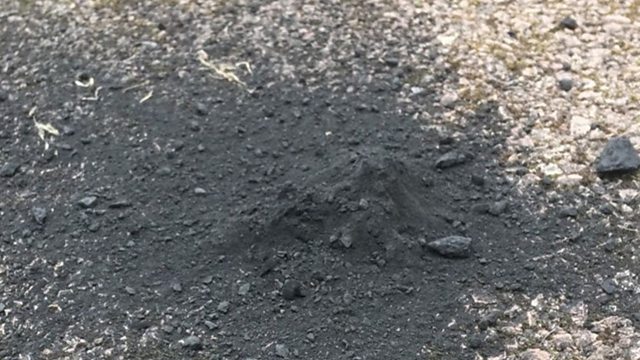A shooting star parked on your driveway
Last week a fireball lit up the sky of western England. Locals and professionals scoured the countryside for surviving precious meteorite fragments, and this week they found some.
Last week a fireball lit up the sky of western England. Locals and professionals scoured the countryside for any surviving precious fragments of meteorite, and thanks to them some bits of the earliest solar system are now in London’s Natural History Museum. And as an excited Sara Russell, Merit Researcher in Cosmic Mineralogy tells us, examples of carbonaceous chondrite – the soft, loamy type that fell in Winchcombe – such as this, are a rare and special chunk of luck.
10 years on from the Japanese Tsunami
Exactly a decade ago the disastrous huge wave caused by an earthquake at sea struck the coast of Japan, causing death and devastating consequences. The flood defences have been rebuilt to replace the ones swept away. But could new ways of spotting tsunamis beyond the horizon be, well, just over the horizon? Giovanni Occhipinti of the Paris Geophysics Institute tells Roland about his technique of looking at disruptions in the highest levels of the atmosphere - using the slight twinkle in a beam from a GPS or GNS satellite - to infer that a massive wave may be on its way.
Hacked EMA emails and mRNA vaccine stability
This week a piece in the British Medical Journal provides some insight into how the medical regulatory bodies scrutinised the novel RNA vaccines that were the science marvels of 2020. Investigative journalist Serena Tinari was one of the people who received anonymously a large, though selective, bundle of hacked emails and documents dating back to November copied from the servers of the European Medicines Agency. They make mention of concerns the Agency had over the levels of effective RNA contained in some batches of the industrially produced Pfizer Biontech Covid vaccine compared to the laboratory produced doses. The EMA did subsequently licence the vaccine - the problem having presumably been solved. However, as Serena describes, she was then surprised that the companies and agencies she and the BMJ approached would not tell her what the threshold was for adjudging acceptable levels, given as is well known, the fragility of mRNA and the need to store it carefully. They said it was commercially sensitive.
But as RNA researcher Prof Anna Blakney tells Science in Action, there are fascinating reasons why that might simply not be known, and also why precise accuracy likely doesn’t matter too much compared to the better-known clinical efficacy these vaccines continue to demonstrate.
Presenter: Roland Pease
Producer: Alex Mansfield
Studio Manager: Duncan Hannant
Image: Meteorite of carbonaceous chondrite found in Gloucestershire, England, UK
Credit: Anonymous
Last on
More episodes
Broadcasts
- Thu 11 Mar 2021 20:32GMT�鶹�� World Service Americas and the Caribbean, UK DAB/Freeview, News Internet, Europe and the Middle East & Online only
- Thu 11 Mar 2021 21:32GMT�鶹�� World Service Australasia, South Asia & East Asia only
- Fri 12 Mar 2021 04:32GMT�鶹�� World Service
- Fri 12 Mar 2021 11:32GMT�鶹�� World Service
- Fri 12 Mar 2021 18:32GMT�鶹�� World Service East and Southern Africa & West and Central Africa only
Podcast
-
![]()
Science In Action
The �鶹�� brings you all the week's science news.


